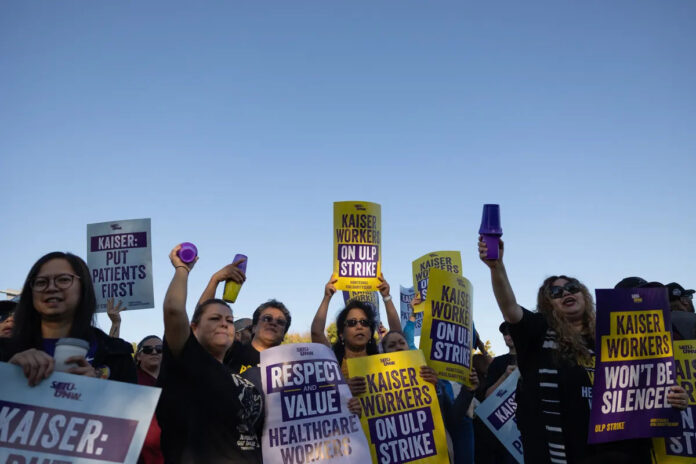by Suzanne Potter
Nov. 6, 2023 – Despite the roaring economy, food insecurity got worse in 2022 – nationally and in Los Angeles County.
New data from the U.S. Department of Agriculture shows 12.8 percent of American households were food insecure last year, an increase of more than 2.5% from 2021.
And, a recent report from the University of Southern California found that more than a million households in LA County are food insecure.
Alba Velasquez, executive director of the Los Angeles Food Policy Council, said inflation is partly to blame – as the cost of living in California has gone up 19% since 2020.
“So there’s been an increase in housing, in your utility bill, in food,” said Velasquez, “without seeing an increase in livable wages.”
And inflation rose even as millions lost their jobs during COVID. So food pantries have seen an increase in demand.
The most recent state budget put $35 million into the Market Match program to help low-income families afford fresh produce at farmer’s markets.
In addition, families on Electronic Benefit Transfer (EBT) – also known as food stamps – saw a steep drop in their monthly benefits once the pandemic emergency ended.
Velasquez said that means rates of food insecurity will be even worse for 2023.
“During COVID, there was an increased allotment for EBT recipients that was between $36 and $95 per month,” said Velasquez. “It was an emergency, temporary allotment that ended this last March. And so now we’re in a deeper crisis.”
The issue will come up again in the next few months as legislators hammer out a new farm bill, which provides funding for food assistance. Some conservative lawmakers have called for significant cuts in Supplemental Nutrition Assistance Program (SNAP) food benefits.
CA colleges work to reduce high cost of textbook
College students pay upwards of $1,100 a year for books and supplies, so many schools are working to try to reduce the burden.
A study from U.S. Public Interest Research Group found the cost of course materials has increased at three times the rate of inflation since the 1970s, due mostly to lack of competition in the college publishing industry.
Cailyn Nagle, open education resources program manager for the Michelson 20 Million Minds Foundation, co-authored the report.
“We see 65 percent of students skip buying a textbook due to cost, and 21 percent of students skip buying access codes because they can’t afford it,” Nagle reported.
Many campus libraries lend out textbooks, and bookstores sell used books and facilitate rentals or digital downloads. Students look for deals online. And schools are also moving toward an Open Educational Resource model where courses use textbooks, journals and other materials available free online. In 2021, the State of California allocated more than $115 million to help schools promote the transition.
Leslie Lange Kennedy, assistant vice chancellor of academic technology services at California State University, said the school works to help students get the materials they need.
“We work really hard to help faculty become aware of zero-cost course materials,” Lange Kennedy explained. “And to help them with the time and effort that it takes to migrate their courses utilizing a free or low-cost material.”
Recently, Gov. Gavin Newsom signed Assembly Bill 607, which requires colleges and universities to disclose the costs of their courses ahead of time.
Support for this reporting was provided by Lumina Foundation.










